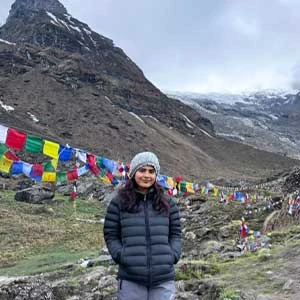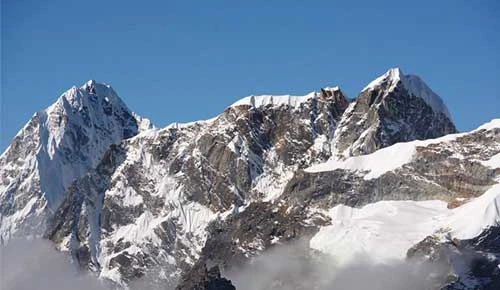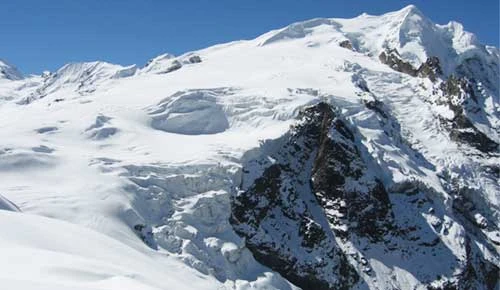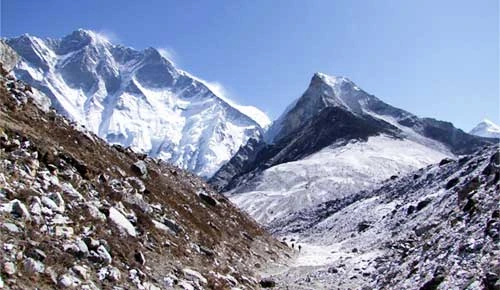Best Time to Take an Annapurna Base Camp Helicopter Tour
Best Time to Take an Annapurna Base Camp Helicopter Tour
You’ve decided to skip the week-long trek and take the ultimate shortcut: a helicopter tour to Annapurna Base Camp. It’s the adventure of a lifetime! But there’s one big worry for every high-altitude traveler: what if you spend all that money and fly straight into clouds?
Picture this: you wake up before dawn, the helicopter blades start spinning, and you lift off over the Himalayan foothill only to find a thick fog blocking the Annapurna Base Camp views you were dreaming of. Instead of towering peaks, all you see is a white blur. That’s an experience no one wants after paying for a helicopter ride to Annapurna.
The good news? You don’t have to leave it to chance. By understanding the Himalayan weather and timing your trip right, you can book your flight during the best seasons and the clearest times of day. In this guide, we will cover the best time for a helicopter tour, the prime months, and tips to make sure your Annapurna helicopter sightseeing is unforgettable.
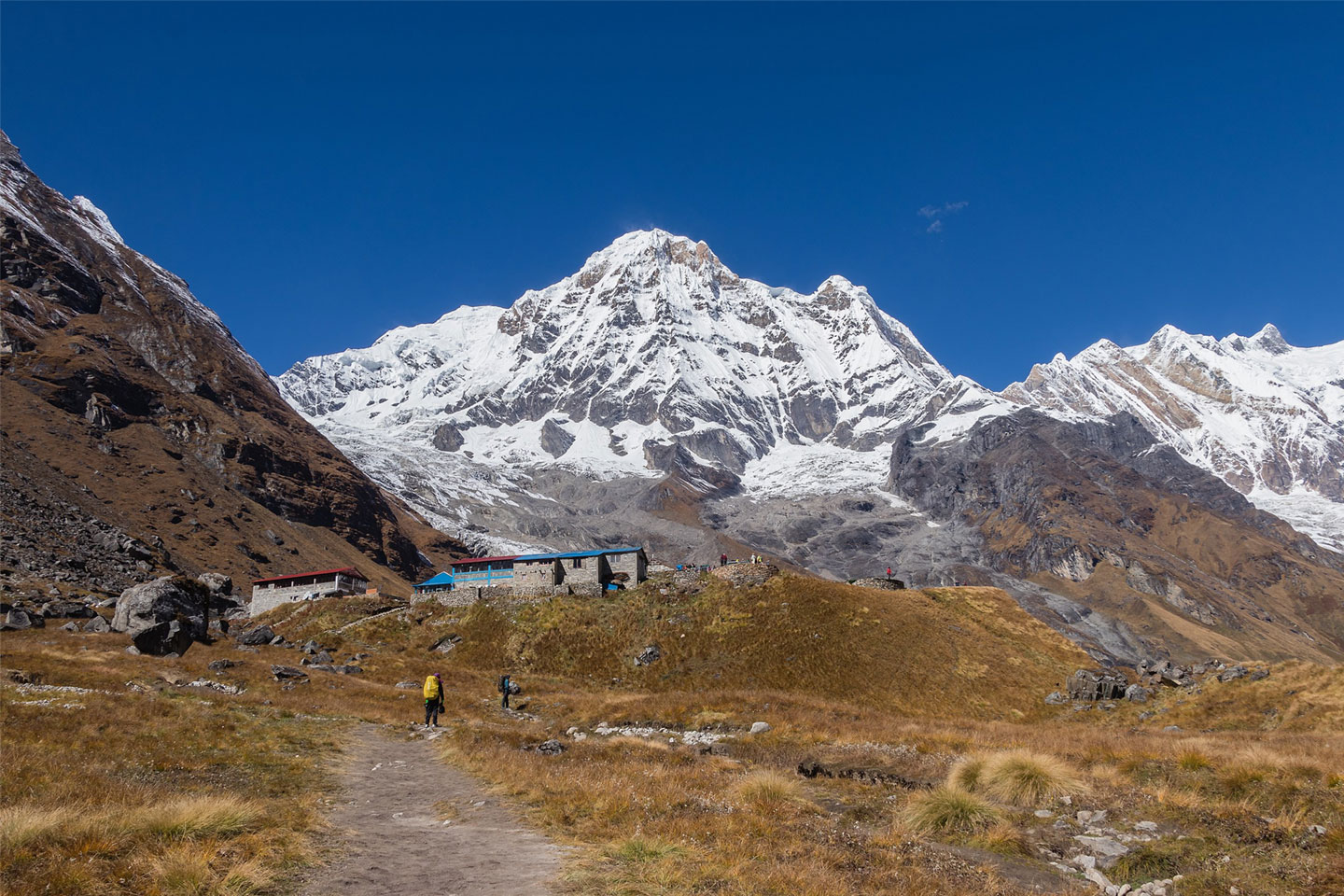
Table of Contents
Best Seasons to Take an Annapurna Base Camp Helicopter
When planning a trip to Annapurna Base Camp by helicopter, timing can make all the difference. Clear skies and good weather turn the flight into a truly unforgettable experience, while poor conditions can hide the mountains completely. There are two main periods to consider: one when the weather is almost always perfect, offering clear skies and stunning views, and another when conditions are less predictable but a flight is still possible if you’re flexible. In the sections below, we’ll take a closer look at both types so you can plan your trip wisely.
The Golden Windows: Autumn and Spring
The best time for a helicopter tour is during the “Golden Windows” of Autumn (September to November) and Spring (March to May). They are called “golden” because these seasons consistently deliver crystal-clear skies, stable weather, and ideal temperatures the perfect combination for panoramic Himalayan views. In Autumn, the monsoon has cleared the air, leaving crisp, clean skies and mild temperatures around 15–20°C in the valleys. Spring offers pleasant mornings, temperatures around 18–22°C, and the added beauty of blooming rhododendrons painting the lower slopes in vibrant reds, pinks, and whites. Flying during these windows maximizes your chances of enjoying stunning visibility and an unforgettable Annapurna helicopter sightseeing experience.
Off-Seasons: Winter and Monsoon
Outside the Golden Windows, conditions can be less predictable. In Winter (December to February), the air is crisp and the peaks are blanketed in snow, but temperatures can drop below 0°C at the base camp, and fog may occasionally delay flights. During the Monsoon (June to August), the skies are often cloudy, rainy, and humid, with valley temperatures around 20–25°C but poor visibility, making flight cancellations more common. Choosing these off-seasons requires flexibility, though a clear day can still reward you with spectacular Himalayan views.
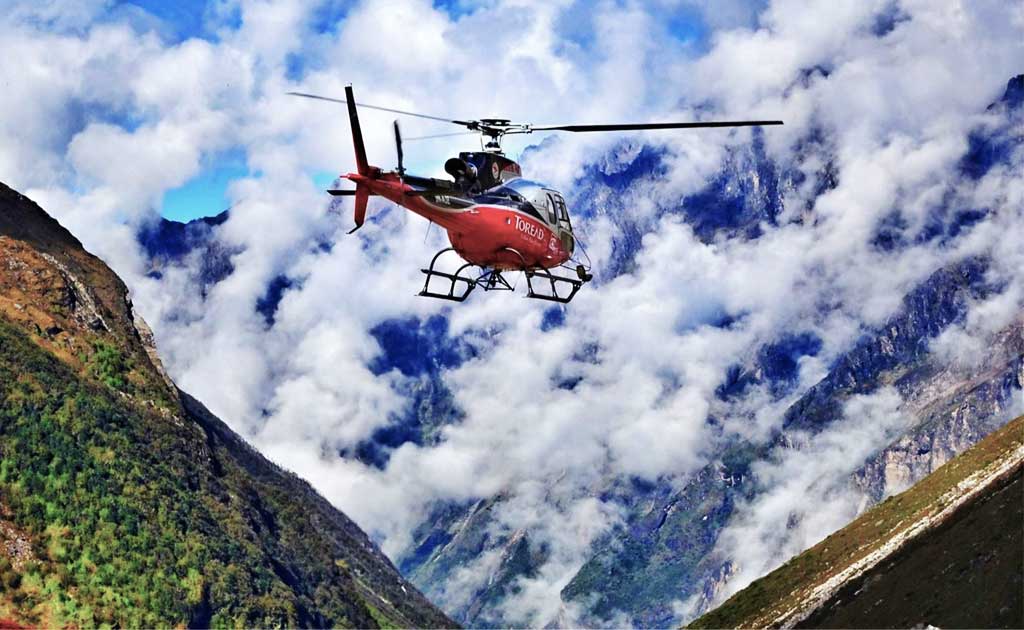
Why Timing Matters for an Annapurna Helicopter Tour
For any high-altitude helicopter tour in the Annapurna region, the conditions at the moment of your flight are just as important as the season you choose. Mountain weather can shift quickly, and calm, clear skies make all the difference. That’s why proper timing ensures not only safety and stability but also a chance to fully enjoy the breathtaking scenery.
Early morning flights are best
The best helicopter flights to ABC almost always take off early in the day. In the mornings, the air is calm and stable, which makes the ride smoother and safer. Later in the day, wind and turbulence can pick up, especially around the high ridges and valleys, which can make the flight less comfortable and even limit how close the helicopter can safely get to the peaks. Early morning flights also let you see the mountains as they gradually catch the first light of the day, making every ridge, snowfield, and valley look more dramatic and alive.
Seasonal weather patterns affect visibility
The Annapurna region experiences rapidly changing weather due to its high altitude and monsoon influence. Fog, haze, and clouds can form quickly, and poor timing could mean spending your flight staring at mist rather than the towering peaks. By flying during the stable seasons of Autumn and Spring you greatly increase your chances of clear skies. These seasons follow the monsoon and pre-monsoon periods, leaving the air crisp, dry, and unobstructed. Understanding these patterns allows you to avoid disappointment and ensures you actually see the breathtaking Himalayan scenery you came for.
Morning sunlight enhances the mountain’s beauty
The soft light of the morning transforms the mountains into a living masterpiece. Snow-capped peaks glow as the sun rises, and shadows stretch across valleys, highlighting the contours of the landscape. This is why morning flights feel magical; the combination of light and elevation makes the mountains appear larger, more dramatic, and more three-dimensional. Photographers and sightseers alike benefit from this perfect lighting, capturing images.
Stable air ensures safety and comfort
Mountain flying requires more than just a pilot’s skill; it relies heavily on stable air conditions. Calm air reduces turbulence, making the flight smoother and safer for passengers. Unstable conditions later in the day can cause sudden bumps and shakes, which might be uncomfortable or even dangerous near high-altitude ridges. Flying when the air is most stable also allows pilots to safely navigate closer to cliffs and ridges, offering passengers a more intimate and breathtaking view of Annapurna’s dramatic terrain.
Clear skies maximize panoramic views
Even minor haze, mist, or moisture in the air can dull the clarity of distant peaks. Proper timing, both seasonally and within the day, ensures the skies are as clear as possible, giving passengers uninterrupted panoramic vistas. From the helicopter, you can see multiple peaks at once, valleys below, and the intricate details of glaciers and forests that make the Annapurna region so extraordinary. Missing this timing could mean glimpses of peaks through clouds instead of full, awe-inspiring views.
Proper timing creates a memorable experience
Choosing the right time combines calm air, optimal visibility, and perfect sunlight to create a journey that’s smooth, safe, and visually stunning. Every moment from lifting off to circling the base camp is amplified when the weather and light are ideal, leaving you with lasting memories of the Himalayas at their finest. Proper timing ensures that your flight becomes more than a trip; it becomes an unforgettable adventure in one of the world’s most majestic mountain ranges.
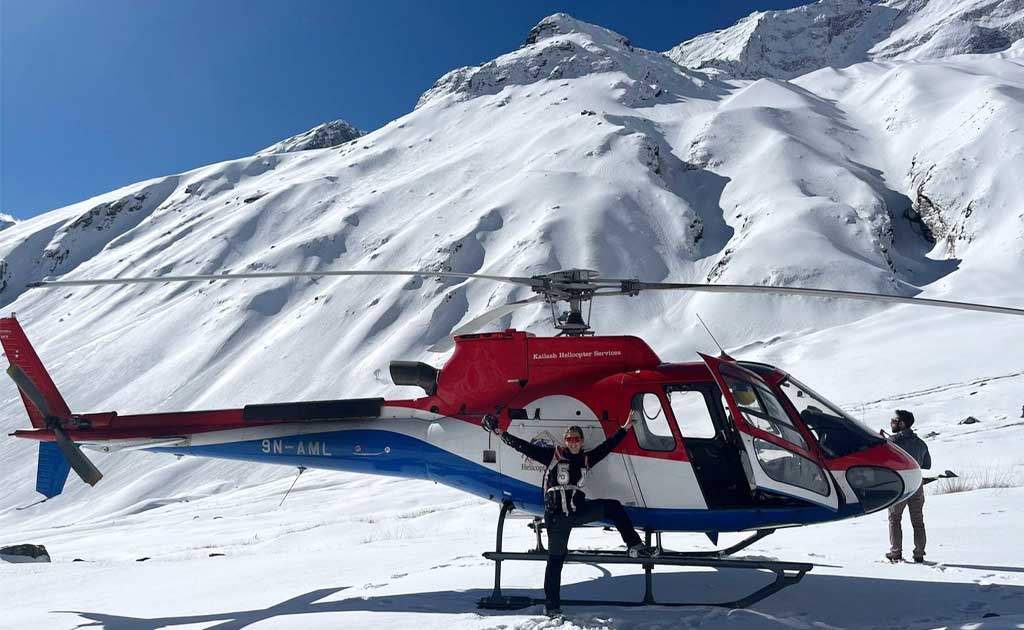
Benefits of Taking the Helicopter Tour During the Best Season
Seeing the Himalayas from above is an unforgettable experience, but the clarity and quality of that view depend heavily on when you go. Choosing the right season usually Autumn or Spring means calmer air, clearer skies, and sunlight that brings out every ridge, valley, and snow-capped peak in vivid detail. Proper timing ensures stable conditions and the best possible opportunity to take in the full scope of the Annapurna region. Here are the benefits of taking your helicopter tour during the best season:
- Calm and stable air for a smooth, safe flight
- Clear visibility with uninterrupted panoramic views
- Morning sunlight highlights peaks and valleys
- Comfortable temperatures for passengers
- Ideal conditions for photography
- Lower risk of flight delays or cancellations
- Safe opportunity to fly closer to ridges and peaks
- Enhanced contrast and vibrant colors of the landscape
- Predictable and enjoyable overall flight experience
- Best chance to see snow-capped peaks and Himalayan scenery
Contingency Planning for Annapurna Helicopter Flights
Flying around the Annapurna region can be one of the most breathtaking experiences, but the mountains are famously unpredictable. Factors like visibility, wind speed, and cloud cover are critical for safe helicopter operations, and even a small shift can prevent a flight from taking off or force an early return. Understanding potential risks ahead of time is essential for planning. Pilots and operators monitor conditions closely, but travelers should also be aware that delays or cancellations can happen even during the best seasons. Careful contingency planning ensures that you stay safe, avoid disappointment, and know what to expect if conditions aren’t ideal. Here is the contingency planning you should know:
| Risk Factor | Description | Planning Tip |
| Visibility | Fog, low clouds, heavy mist, or haze, often in early morning or late afternoon. | Be flexible with your schedule; plan for early flights and allow extra days in case of delays. |
| Wind Speed | Strong winds, including gusts and high-altitude jet stream winds. | Check the weather forecast closely and follow pilot guidance; avoid midday flights when winds increase. |
| Monsoon Carryover | Residual moisture, clouds, or scattered showers, particularly in early September or late May. | Plan your tour during stable seasons (Autumn/Spring) and have backup days for flexibility. |
| Snowfall or Ice | Sudden snowfall or icy conditions at landing sites | Confirm with the operator; dress warmly and expect possible rescheduling |
| Temperature Extremes | Very cold temperatures at high altitudes, especially in winter months. | Wear layered clothing, carry extra gear, and ensure the helicopter operator confirms safe conditions. |
| Rapid Weather Changes | Quick shifts in cloud cover, storms, or precipitation. | Always follow pilot instructions and keep alternative days in your itinerary for safety. |
Tips to Plan Your Helicopter Tour Around the Best Time
To make the most of a high-altitude flight over the Himalayas, careful planning around weather conditions is key. Aim for periods when the skies are usually clear and stable, providing the best visibility and smooth flying. It’s also wise to keep some flexibility in your schedule to accommodate sudden changes in mountain weather. By preparing ahead and considering these factors, you can enjoy a safe, comfortable, and visually stunning journey over the mountains.
- Choose periods when skies are typically clear and stable.
- Schedule flights early in the day to avoid turbulence and clouds.
- Keep flexibility in your itinerary to accommodate sudden weather changes.
- Check local weather forecasts regularly before your flight.
- Book with experienced operators who monitor mountain conditions closely.
- Dress in layers to stay comfortable in varying temperatures.
- Carry sunglasses and a camera to capture the best views.
- Avoid flights during peak monsoon months when cancellations are likely.
- Communicate with the pilot about visibility and route preferences.
- Stay informed about recent weather patterns in the region to plan the safest flight.
Conclusion
Choosing the right time for a flight over the Himalayas can transform your experience, turning a simple ride into something truly memorable. With careful planning around weather, visibility, and sunlight, you can enjoy clear skies, calm air, and views that stay with you long after the journey ends. And if you also love trekking, there’s the option to combine your trek with a helicopter return, letting you experience the trail and still finish comfortably explore the Annapurna Base Camp Trek with Heli Return for more details.
Skip the trek and seize the sky: Nepal Trek Adventure delivers the Himalayas in minutes



